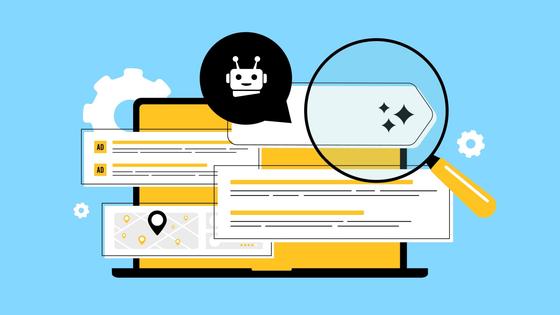How to Appeal to Neural Networks? What is GEO and How to Work with It
Neural networks are used for a wide range of tasks, but one of the key requests is information search.

Chatbots form answers to user queries based on the content already available on the internet. But how do they search for and find these sources, and why do they prefer data from one site over another?
What is GEO
The answer to these questions is one - GEO, or Generative Engine Optimization. This is the adaptation of various types of content to the specifics of artificial intelligence so that it is more likely to be mentioned, summarized, and recommended in generated answers. In other words, optimized data is more likely to be the information that neural networks output.
You could say that GEO is a branch of SEO. However, while SEO is aimed at increasing the visibility of materials in search engine results, GEO focuses on integrating materials into chatbot responses. Moreover, SEO is centered on keywords, links, and technical parameters, whereas GEO is about structure, authority, and clarity for AI.
Advantages of Optimization for AI

When generating a response to a user query, the neural network leaves a link to the original source. Of course, the likelihood of users clicking through to the source site is not very high. However, GEO optimization gives you control over how AI interprets and retells your content.
Generative chatbots don't just output links - they summarize, rephrase, and adapt the information. If your content is not optimized for GEO, neural networks may:
-
Distort the meaning by omitting key details.
-
Give priority to competitors if their data is better structured.
Other benefits include:
-
Increased brand awareness;
-
Additional channels for audience acquisition;
-
Greater competitiveness (the more popular the query, the more neural networks mix data from various sources, creating averaged answers. Your content can get lost in this stream, so it's better to focus on narrower niches and specialized questions, for example);
-
Greater flexibility in content strategy.
At the same time, GEO techniques also work in search engines. For example, Google uses AI models such as Bard to generate answers, and a special block in search results is often generated according to the same principles as a ChatGPT answer. This means that by optimizing content for GEO, you are automatically boosting your organic search results as well.
The popularity of neural networks will only continue to grow, so ignoring GEO is not wise - it gives you a chance to reach active users who are interested in the information you have.
Criteria for GEO
AI evaluates sources based on key factors, including:
-
Relevance - the information must fully match the user's query and be contextually relevant.
-
Completeness - the fewer obvious gaps in the material, the better; the content must be unique.
-
Accuracy - neural networks prefer content with precise wording, clear definitions, and professional terms (though they shouldn't be overused).
-
Usefulness and practical focus - the content should contain step-by-step instructions, clear recommendations, and real-world case studies.
-
Structure - break the material into multiple subheadings, avoid overly long paragraphs, include tables, lists, checklists, diagrams, and illustrations; in other words, the content should not be a solid wall of text.
-
Expertise - for neural networks to show your content, your site must have high search engine trust and a large number of inbound links from various sources.
-
Strong technical performance - the site should load quickly and have a user-friendly mobile version.
Where to Start Optimization

Step 1. Analysis and Strategy
-
Identify the target audience for your content and the scenarios in which AI might mention it.
-
Analyze what queries users might ask neural networks, and find intersection points with your content.
-
Study competitors: whose answers AI uses and how their content is structured.
-
Audit your site and materials - identify content with high expertise and adapt it for GEO (this is already step two).
Step 2. Structure and Content Delivery
-
Use clear, non-abstract headlines that reflect the essence of the topic.
-
Include lists, tables, step-by-step guides, and recommendations - AI extracts information more easily from structured formats.
-
Start the material with a short, concise answer (2-3 sentences), then expand on the details.
-
Add FAQ sections with direct, easy-to-understand answers to common questions.
Step 3. Semantics and Completeness
-
Cover the topic in depth and in context - AI favors sources that address the question comprehensively.
-
Use synonyms and related terms to cover different query formulations.
-
Include examples, statistics, and supporting evidence.
-
Keep content up to date - AI tends to use fresh data.
Step 4. Technical Optimization
-
Implement schema.org markup (FAQ, Article, HowTo) for easier recognition.
-
Fill in meta tags (title, description) so that they match query wording.
-
Optimize loading speed and mobile adaptation - AI may consider page quality as a trust factor.
-
Check indexing and the absence of technical errors in Google Search Console or equivalents.
Lectera’s Online Courses by topic
Step 5. Authority and Trust (E-E-A-T)
-
Specify the author, their expertise, and experience.
-
Cite reliable sources and add external validations.
-
Include data and research, ideally with original sources.
-
Update content and indicate the date of the last update.
Step 6. Adaptation for AI Formats
-
Write so that individual paragraphs can be inserted into AI responses without editing.
-
Include definitions of terms - generative engines like to use dictionary-style explanations.
-
Create overview materials that AI can break into several fragments.
-
Add multimedia (infographics, charts) with descriptions - AI uses alt text and captions.
Step 7. Monitoring and Improvement
-
Use AI mention tracking tools (Wix AI Visibility Overview, Geneo, Perplexity Brand Tracking).
-
Track which content fragments are most often quoted.
-
Analyze the behavior of users who arrive through AI channels.
-
Regularly test queries in popular AI search engines and chatbots to see where you appear.
Step 8. Integrating GEO and SEO
-
Don't abandon traditional SEO - GEO works in tandem with it.
-
Use keywords not for density, but for semantic coverage.
-
Optimize old articles - updated content can appear in AI answers.
-
Publish on authoritative platforms (guest posts, industry blogs) to boost link equity.
Today, GEO is no longer just a trendy buzzword - it's an effective strategy at a time when traditional promotion methods often fail. By implementing GEO, you'll benefit even if users don't click through to your site. You'll gain a competitive advantage, improve not only chatbot visibility but also classic SEO.
We are confident that the future of content marketing lies in such strategies - those who adapt to them faster will gain more traffic, user trust, and influence in the AI era.
Share this with your friends via:
Latest News

A significant stage in the development of the alternative education system has begun in West Northamptonshire in the UK: the County Council is actively calling on parents, guardians, and trustees to participate in shaping the future of this key area.

Outwoods Primary School in Atherstone, Warwickshire, having experienced deep sadness after the loss of their famous cat, Silla, has found solace in a new pet – a Maine Coon named Aloysius O’Hara.

In modern universities, artificial intelligence, and in particular ChatGPT, is rapidly transforming from a controversial tool into a full-fledged student assistant.

An innovative educational project is gaining momentum in UK primary schools, aiming to change attitudes towards video games.

The Massachusetts Institute of Technology (MIT) presents MIT Learn – a revolutionary online platform that opens a “new front door” to access university knowledge and resources.












 Life After the Holidays: How to Beat the Post-New Year Blues
Life After the Holidays: How to Beat the Post-New Year Blues
 Which Christmas Movie Character Are You?
Which Christmas Movie Character Are You?
 Your New Year’s Forecast: What Awaits You in the New Year?
Your New Year’s Forecast: What Awaits You in the New Year?
 Test. What Career Goal Should You Set for Next Year?
Test. What Career Goal Should You Set for Next Year?
 Test. Which New Year Archetype Are You?
Test. Which New Year Archetype Are You?
 Test. How Should You Spend the Winter Holidays?
Test. How Should You Spend the Winter Holidays?
